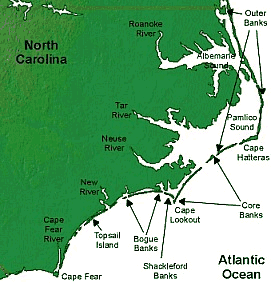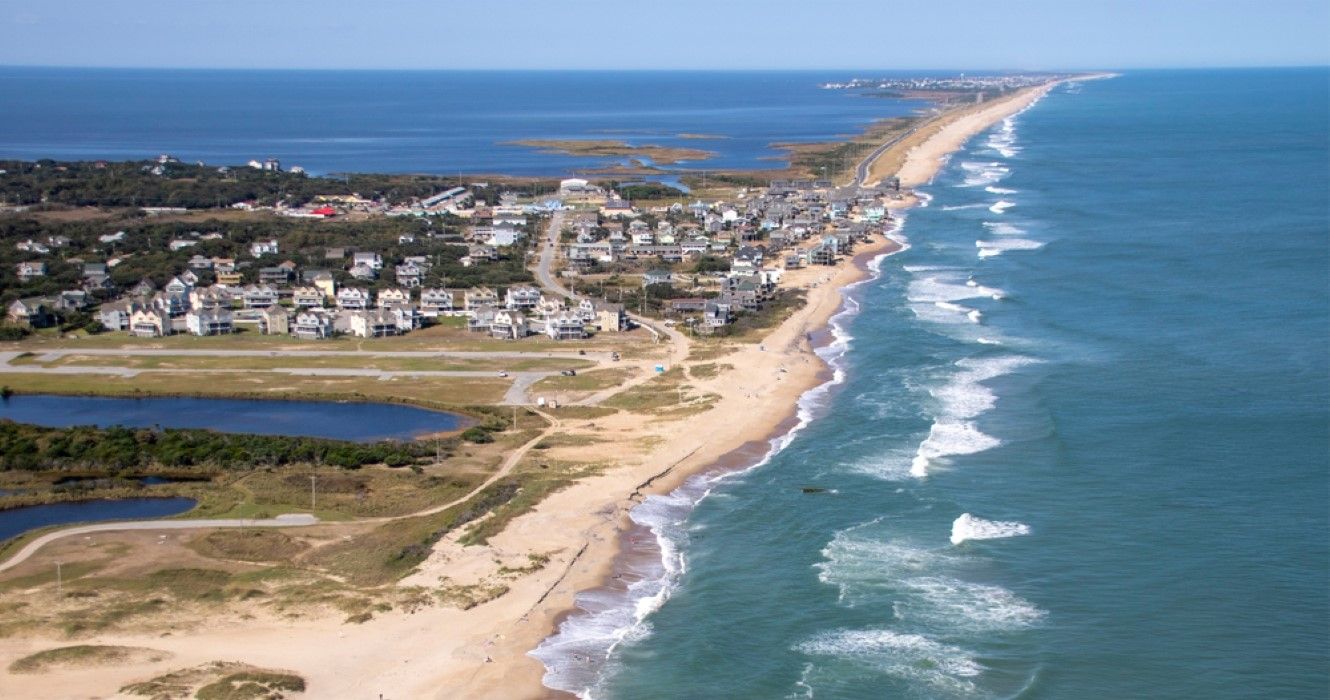

“It’s not something that is going to happen to us, it’s something that is happening now and that ignoring the problem probably won’t make any progress for us,” Hallac said. And for humans, the National Park Service could have to make changes to low lying parking areas and buildings, even the NPS’s own administrative offices. Rising sea levels mean there could potentially be less habitat for birds and sea turtles. “Over the coming decades, we are looking at significantly more sea level rise and that will make life even more challenging,” he said, standing in front of the Bodie Island Lighthouse, a landmark on the Outer Banks. “This is Ground Zero,” said David Hallac, superintendent of National Parks of Eastern North Carolina, including Cape Hatteras National Seashore. His territory includes Cape Hatteras National Seashore, which is already seeing impacts from sea level rise. But that is just a temporary fix to buy time, he said.ĭavid Hallac, at Bodie Island Lighthouse, is the superintendent of National Parks of Eastern North Carolina. So for roughly the last 50 or so years we’ve been trying hard with bulldozers and dump trucks and dredges and all of those things to hold the coastline in its place,” Luettich said. “We work really hard to put the coastline back the way it has been. The biggest tool Outer Banks communities have to combat erosion from sea level rise is what’s called beach renourishment, essentially dredging sand from the ocean floor and pumping it back onto the beaches. “I think that over the course of time we’ll see the North Carolina barrier islands, the lowest parts of them, become harder and harder to maintain and we may end up having to give back parts of them,” he said. This probably won’t be the last big bridge project for the Outer Banks, said Rick Luettich, director of the University of North Carolina’s Institute for Marine Sciences. “The dunes look high, but if you walk on the back side, there’s no beach there and the water is usually lapping up against the back side of the dune.”

“There’s very little beach left in that area,” he said.

But what’s making things harder for his crews is erosion. Ryder said he hasn’t seen storms get any worse in his decade as maintenance engineer for this stretch of the Outer Banks. After that, the DOT plans to remove the road from that stretch, part of National Park property called the Pea Island National Wildlife Refuge. The 2.4 mile bridge is set to open later this year. The new $145-million bridge, called the “jug handle bridge” because of its shape, comes out of Rodanthe and cuts around some of the worst spots for the road, joining back up with the island a couple of miles north where it widens out again. The road started washing out so much, the state decided to build a bridge around the worst spots. “That roadway has been destroyed and rebuilt so many times, I don’t think we’re even on the right of way anymore,” he said. 3, 2016 after Tropical Storm Hermine passed the Outer Banks. But the cleanup after a storm can involve all kinds of things,” Ryder said.Ĭars drive on the flooded NC Hwy 12 in Hatteras, N.C., Saturday, Sept. Sometimes we have to reposition sand to other dunes, so we use dump trucks. It’s using bulldozers, excavators, front-end loaders, graders. Those employees work in some of the harshest conditions imaginable on this thin stretch of land out in the Atlantic. “I have some employees who say they’ve moved the same grains of sand about a million times,” he told Spectrum News 1. When a big storm comes through, they can bring in help and equipment from the DOT and contractors to get the road back open. Ryder has a team of about 15 people working year-round doing constant maintenance on the road to keep back the sand. Of course, Mother Nature has a different take on that, but we try and fight back as best we can,” he said. “That’s why it’s very important to us to try and keep it as open and clear as possible at all times. It is the one link, the only link, to Hatteras and the ferry systems to Ocracoke,” Ryder said. 12 is the only option for people to get to and from, to get to their stores, their doctor’s appointments, whatever. Many communities are already seeing the effects of climate change with erosion, higher tides and salt water getting into land that once had fresh groundwater.

Tens of thousands of homes and billions in property along the North Carolina coast are at risk by the end of the century.Projections say the ocean could rise anywhere from one foot to eight feet, depending on how the world cuts back on carbon emissions to slow climate change.Sea level rise is increasing 5.3 millimeters a year at Oregon Inlet, along the Cape Hatteras National Seashore.


 0 kommentar(er)
0 kommentar(er)
